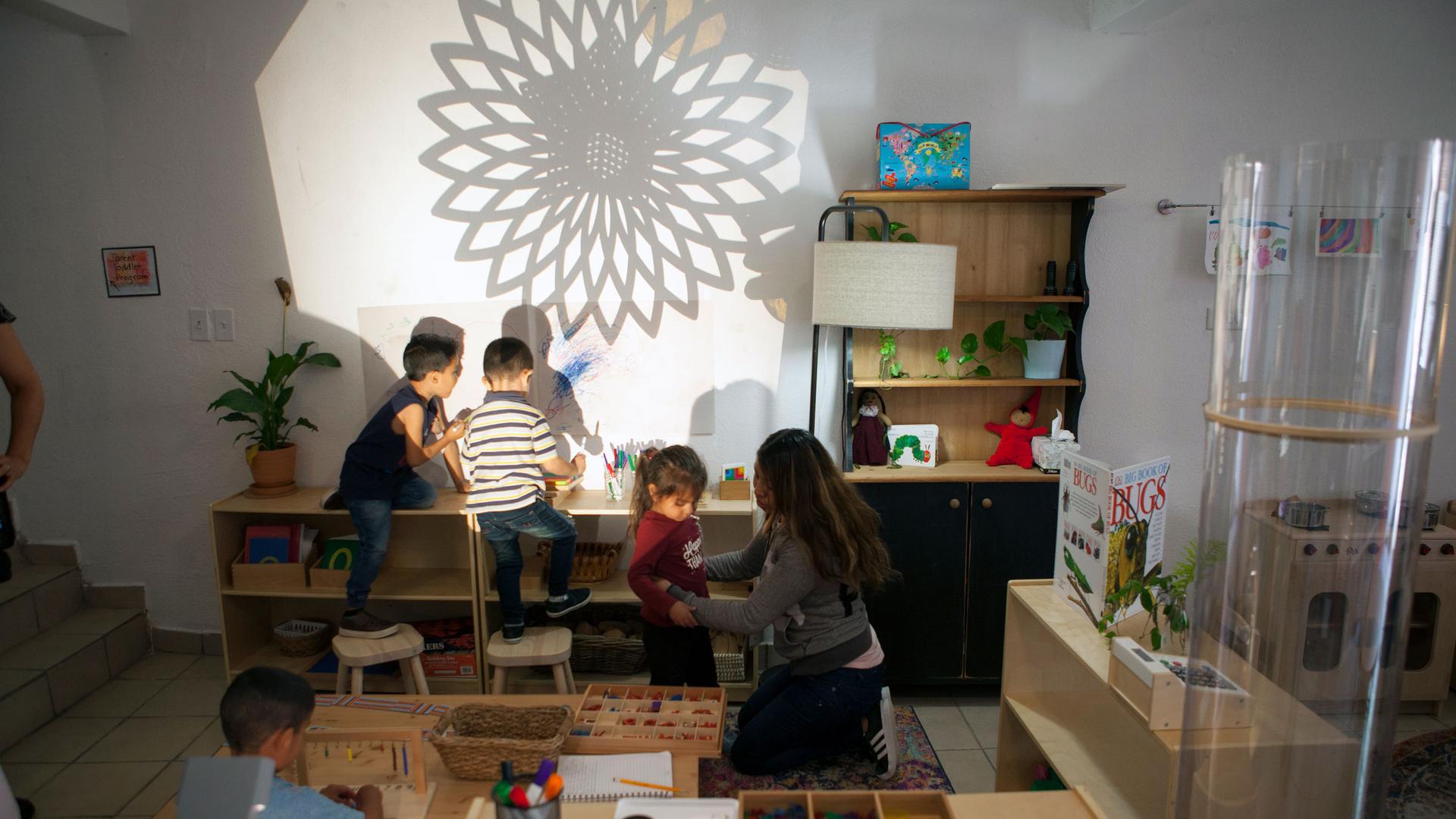Classical music plays, silk curtains blow in the wind, and comfy couches offer a place to curl up with a book. There are wooden toys, colorful magnetic blocks and crayons organized by color in glass jars. Children use light projectors to make patterns and shapes on the walls.
It may sound like a high-end early childhood education center in California, but this is Tijuana.
Most students and their parents come from other parts of Mexico where there have been recent surges in drug cartel violence. They are waiting for their numbers to be called to enter the United States at the San Ysidro port of entry and hope to lodge claims for asylum. For many, the wait can last several weeks or longer, during which children have little to do.
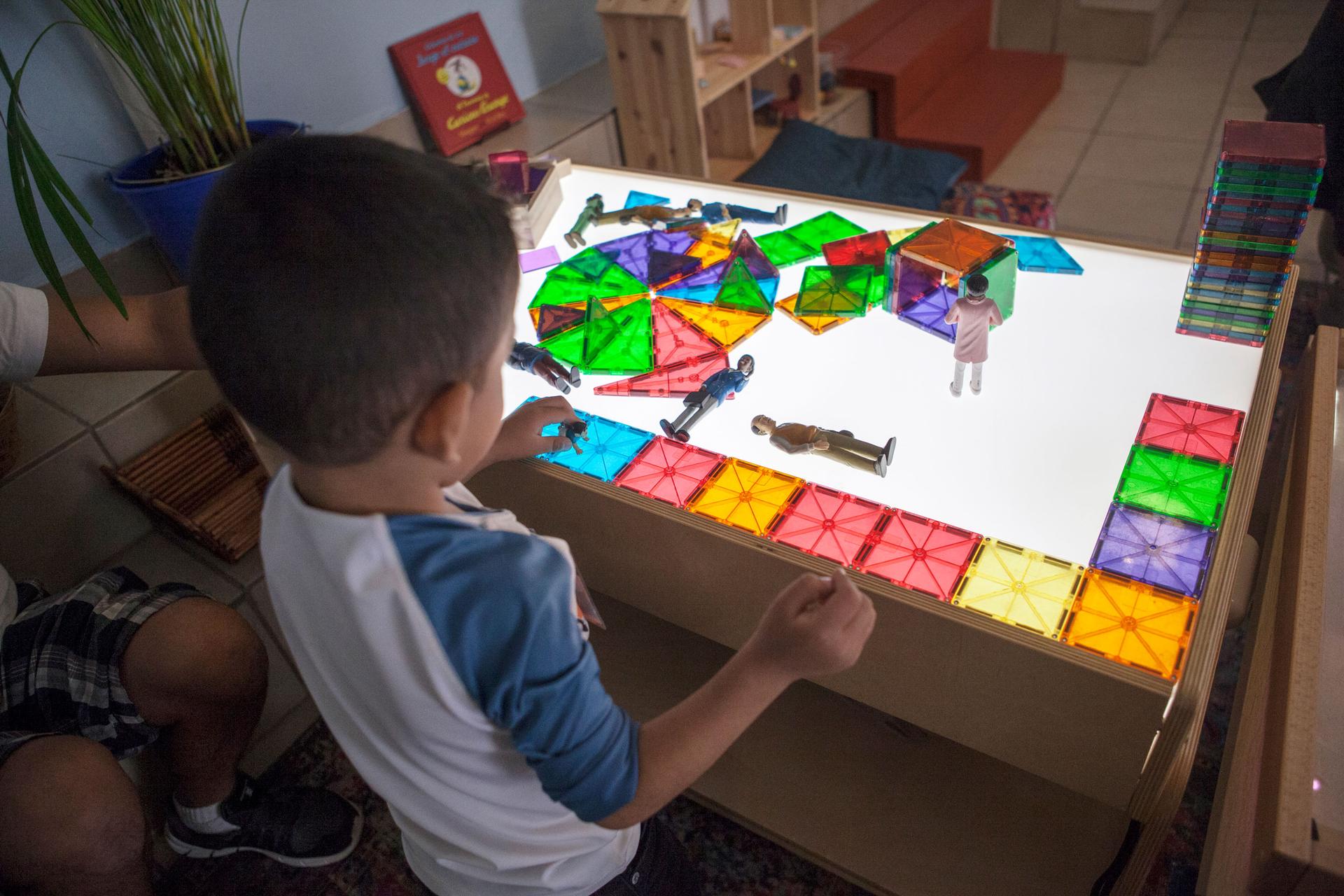
Alise Shafer Ivey, a longtime early childhood director from Santa Monica, California, opened this informal preschool, the Nest, in September. It’s attached to a migrant shelter in this Mexican border city. Nothing else like it exists.
The Nest welcomes children aged 6 and under. It gives them a chance to spend time away from the crowded shelter across the street — and to just be kids.
“This isn’t a Band-Aid solution,” Ivey said. “Of course we’re sweetening the day of that child, but it’s so much more than that. This is about really setting a trajectory that will have an impact.”
Crowded shelters, long waits
Patricia’s 2-year-old daughter is one of the new students at the Nest. On the journey to Tijuana, Patricia said her two girls kept asking where their dad was. But how could Patricia tell them? They couldn’t even go to the funeral. It was too dangerous to show up to bury her husband, she said.
He had been a small-business owner in the western Mexican state of Michoacán, which has seen a recent spike in violence linked to drug cartels. When men arrived at his shop demanding a bribe, he asked for more time to get the money, Patricia said. They killed him. Patricia and her girls, the older one is 5, fled that afternoon. (The World is not using Patricia’s real name to protect her identity.)
Patricia said she didn’t look back until she got to the shelter in Tijuana. It felt overwhelming: More than 150 people share four bathrooms and a single washing machine. She has one mattress to share with her girls.
Families such as Patricia’s are arriving in Tijuana at a time when applications for asylum at the US-Mexico border have been surging.
Many shelters at the border are overcrowded because asylum-seekers are waiting for longer periods of time under the Trump administration’s controversial “Migrant Protection Protocols” policy, better known as “Remain in Mexico.” Although it’s been challenged in court, it has required more than 56,000 asylum-seekers — most of them Central Americans — to wait in Mexico while their cases are processed in the US.
At the same time, a spike in cartel violence has forced a lot of Mexican families like Patricia’s to seek asylum in the US, too — and find space in overflowing shelters in border towns like Tijuana.
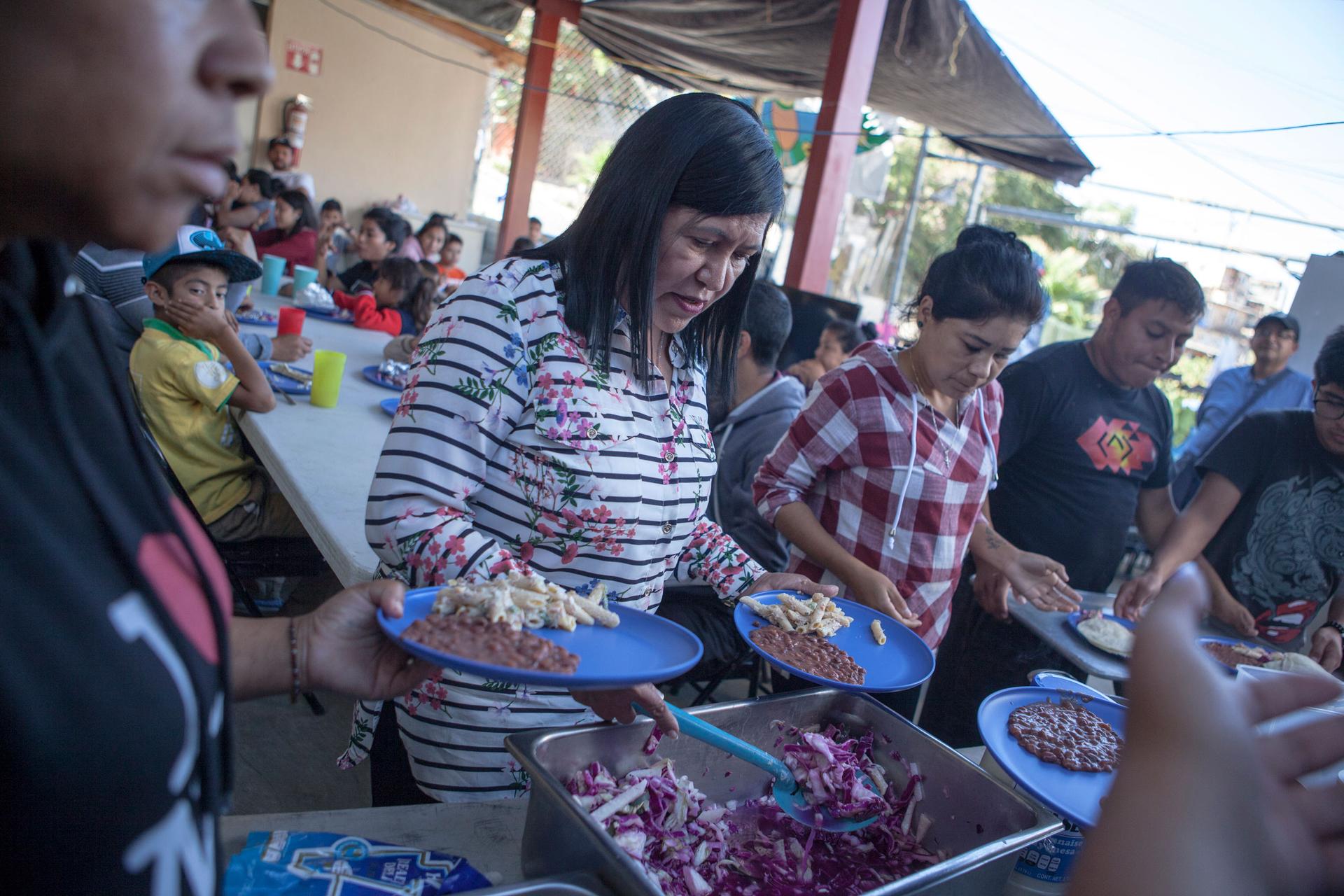
“These kids have seen things no child should see,” Ivey said. “They’ve been stripped of their homelands, they’ve left their families behind. They’ve been stuffed in trunks of cars and crossed over borders.”
“To think we’re going to deliver them to a kindergarten in the US and think it’s going to go well? Not necessarily,” she added.
Research shows kids who have a hard time adjusting socially before age 5 have a lot of trouble catching up. If kids who’ve experienced the trauma of fleeing their homes can play and relax away from the stress of the crowded shelter, it could give them some sense of stability, experts say.

An unlikely pair with a common mission
The idea for the Nest began with a trip Ivey took to Lesbos, Greece, after retiring from decades of directing the Evergreen Community School in Santa Monica. She met a relief worker who invited her to visit a refugee camp, which then housed mostly Syrian refugees.
Children were “digging in the dirt, playing with nails in their pockets,” Ivey said. “They had old cigarette lighters that they had found. There was nothing for children.”
Ivey offered to set up a space for refugee kids to play. She returned to California and raised $10,000 through a nonprofit she helped found, the Pedagogical Institute of Los Angeles. She went on to set up Nests on another Greek island called Samos, then two more in the Congo.
Early childhood teachers, many who are from California, use their vacation time to volunteer for a few weeks at the Nests. They train refugees to work with young children — a skill that could help them find a job if they get asylum in a new country.
The Tijuana Nest got its start after Ivey visited the shelter across the street, where Patricia and her girls sought refuge. Ivey said she instantly connected with Leticia Herrera Hernández, who runs the shelter. They’re both believers in prioritizing the needs of children, especially when parents are going through trauma, Ivey said.
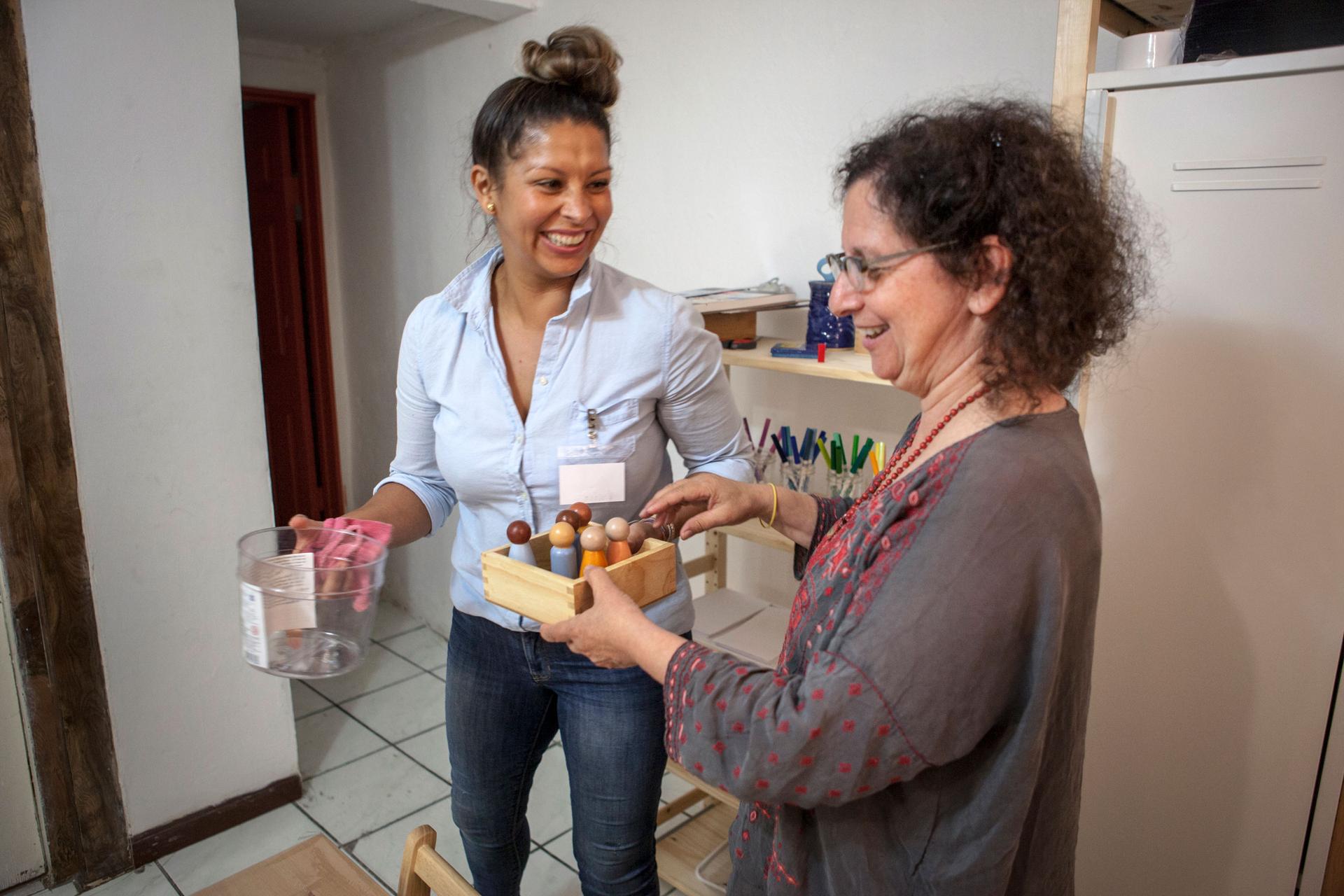
Herrera had already worked with a California group to set up a makeshift elementary school in an old bus next to her shelter. But there was nothing for toddlers and preschool-aged kids.
“The kids would just spend their days playing on their parents’ phones, having tantrums, and we’d be trying to get them to play to entertain themselves,” Herrera said in Spanish.
So she was thrilled when Ivey proposed renting the house and opening an engaging play space for young children who live in the shelter.
Herrera and Ivey make an unlikely pair. Ivey doesn’t speak Spanish and was raised Jewish. She doesn’t count on God or governments to change things, she said. Meanwhile, Herrera is a devout Catholic, guided by her unwavering faith that God will provide.
Herrera came to working with refugee families via a different path than Ivey: through tragedy. She used to own a beauty salon and lived an upper-class life in Tijuana. Then her son was killed in a car accident in 2002 in his mid-20s.
“Everything I thought was important didn’t matter. … I just wanted to die,” Herrera said.
A priest urged her to channel her pain into helping people, she said. In 2010, a friend asked her to go to the border to hand out food to homeless migrants.
“It crushed my soul to see people so hungry,” Herrera said. “They were wiping every last drop of food from the pots with a tortilla. I left doubting that I had ever done anything meaningful with my life. I started to try to figure out how I could build a house for them.”
A Catholic charity helped Herrera find a space to start a shelter. It became one of the first to house LGBTQ migrants from Central America, attracting the ire of homophobic neighbors who tried to burn it down.
These days, most of the families she houses are from Mexico, fleeing an uptick in cartel violence in the states of Guerrero and Michoacán.
Parents get a space to play, too
At parent orientation night at the Nest, Ivey did what she would do back at her former school in Santa Monica: She laid out a spread with wine and cheese. She talked to the parents about brain science and neural pathways, and explained why memorizing ABCs is not enough.
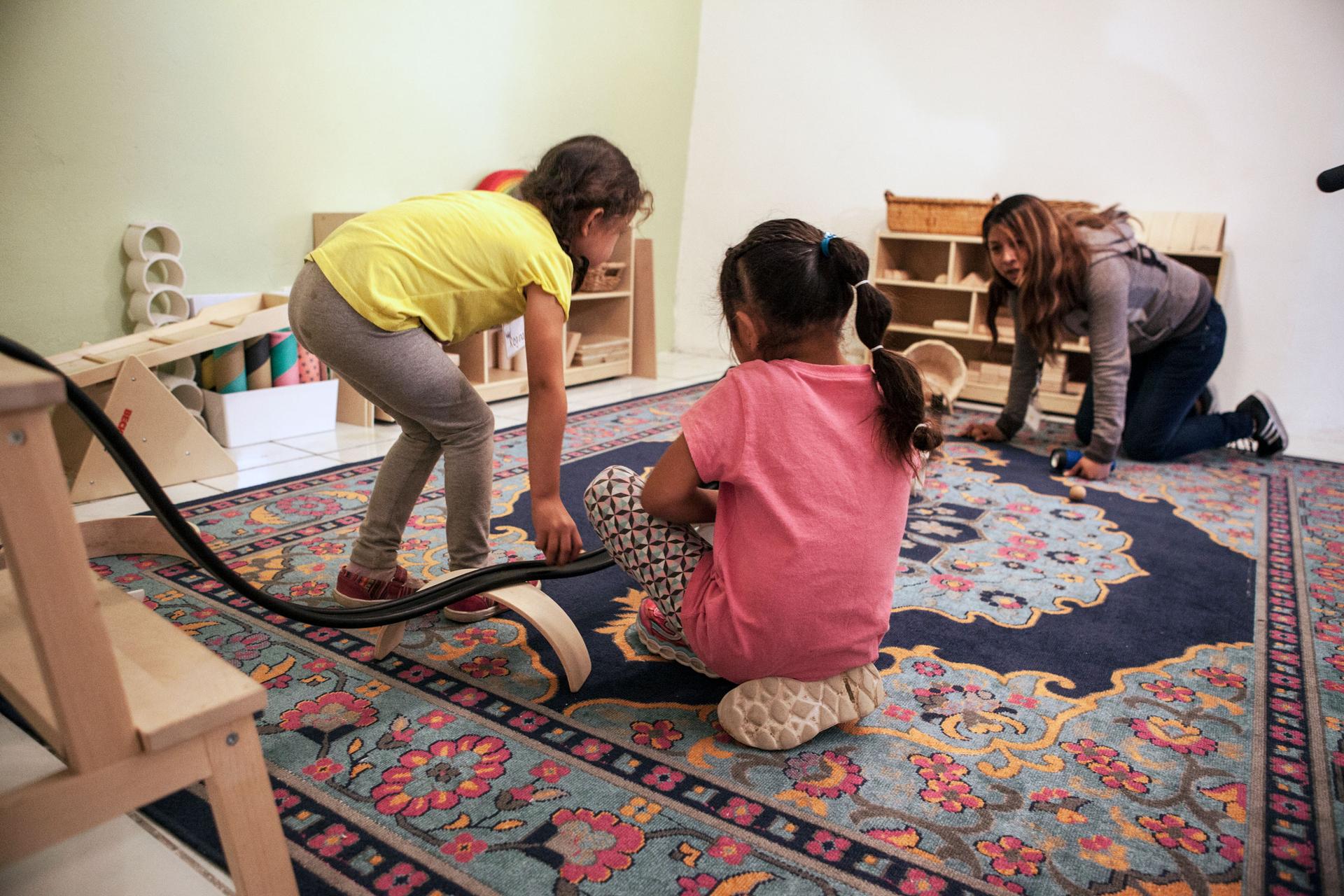
“The more we talk to children about their ideas and ask them ‘I wonder how that would work?’ Not quizzing them, but just wondering with them, the more all of those parts of the brain are activated,” Ivey told the parents, many of whom had never been able to send their kids to preschool in their hometowns.
She encouraged them to try the magnetic wall where they can build a ramp for a ball to roll down. She showed them the light table, the painting area, the clay. Just like their kids do each day, the parents acted in a short play they wrote.
A lot of giggling broke out as Julieta, mom to Kevin, 3, pretended to be a grandmother in a story based on, “Little Red Riding Hood.” She walked hunched over, her hands on her back, to meet a wolf.
The other parents whooped and applauded Julieta’s performance. Ivey said it’s the first time she’d seen Julieta smile.
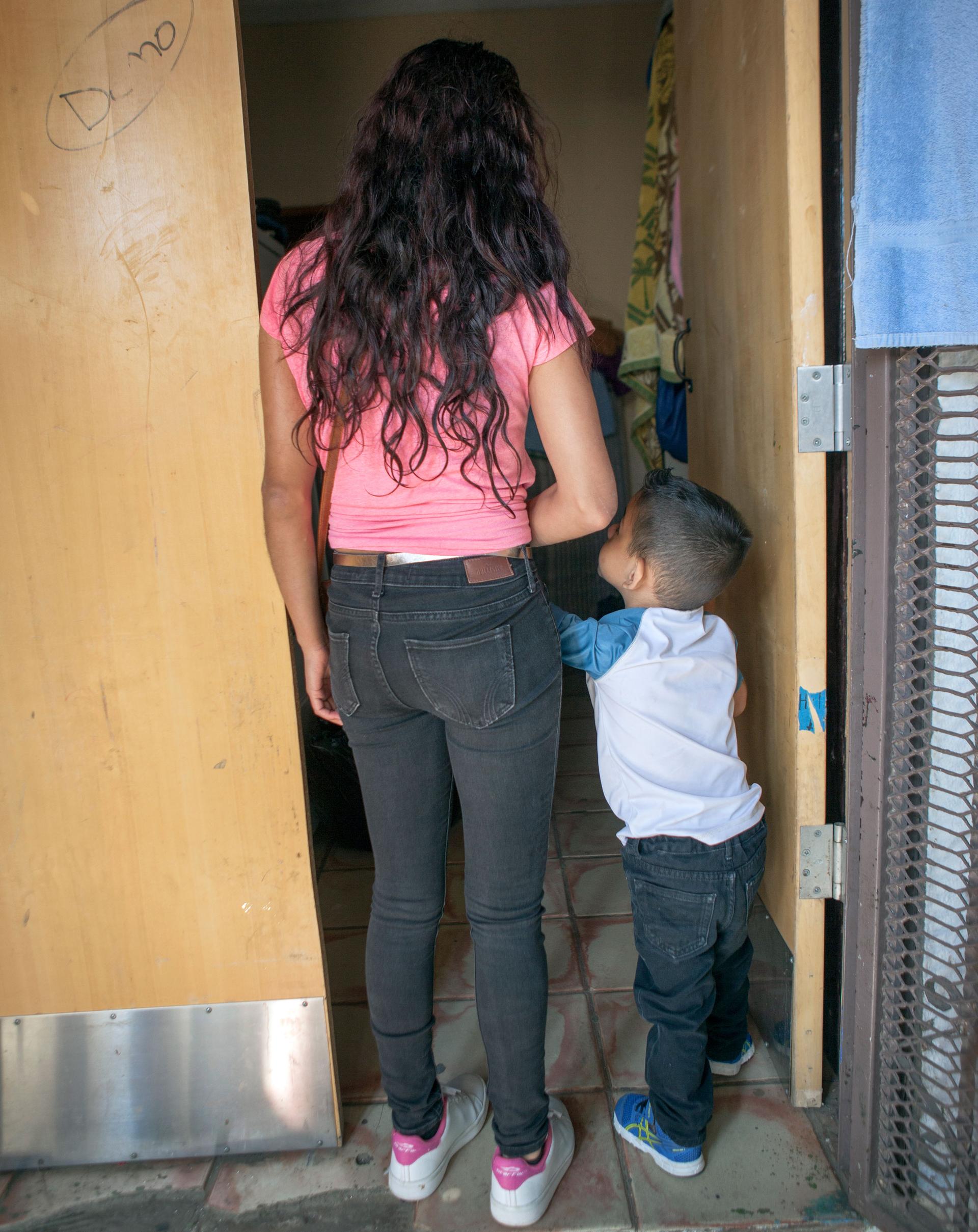
Julieta and Kevin fled cartel violence in Michoacán. When they arrived in Tijuana in August, he had a really hard time accepting the shelter as home. He would hit other kids, yell at them. The Nest has helped him to adjust.
“Now he doesn’t fight. He plays with the other kids,” Julieta said in Spanish (The World isn’t using her real name to protect her identity since she is fleeing violence). “I used to have to grab him so he would turn and listen to me. Now he turns and looks at me. He reaches for my hand.”
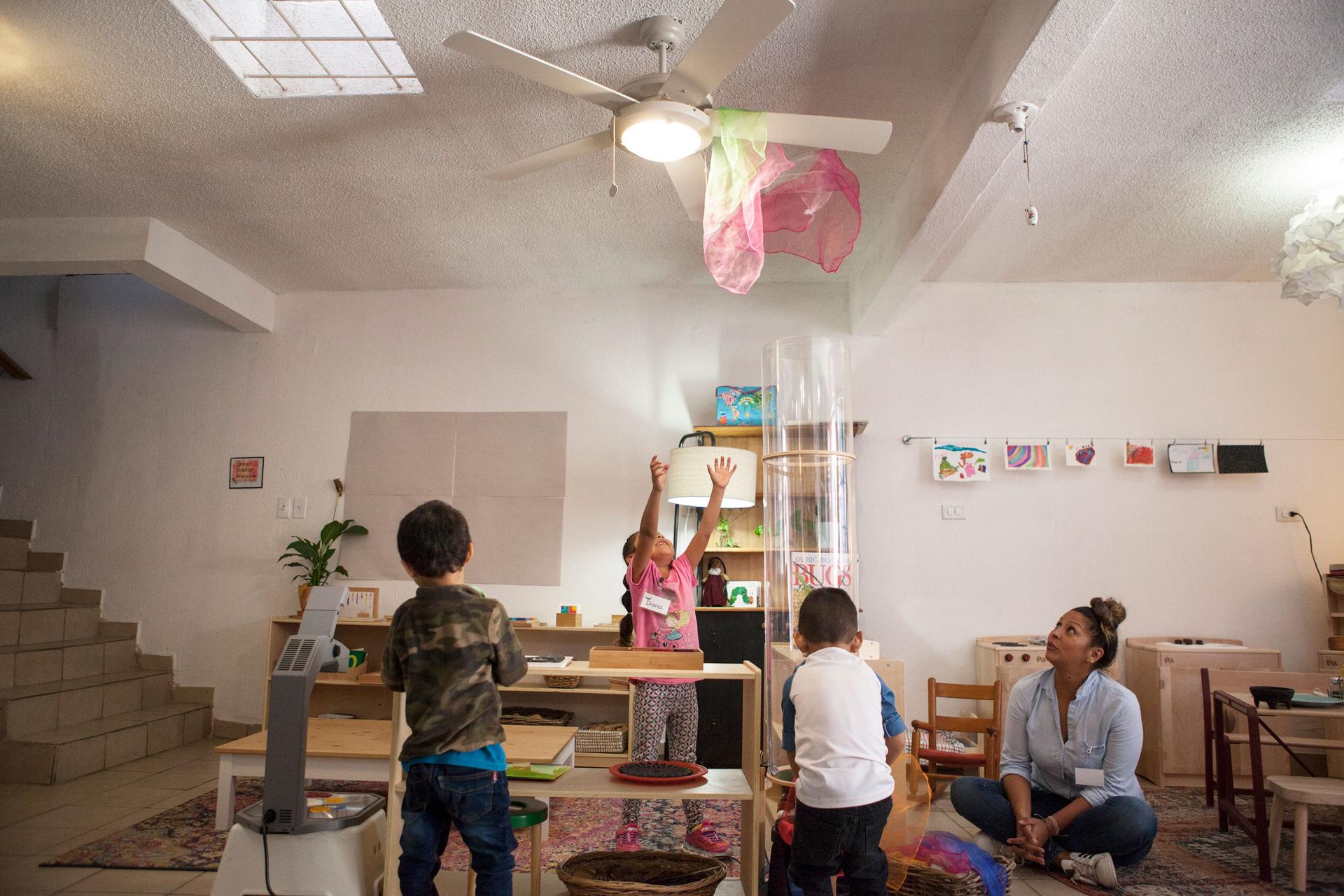
Kevin loves sending silk scarves up through a vertical plastic tube attached to a tiny fan.
“Otra vez! Otra vez!” he shrieked, using the Spanish phrase for “again,” as he watched the scarves float and suspend above his head.
When a scarf got stuck on a ceiling fan, he had to figure out how to retrieve it. Eventually, Kevin and several other kids lugged over a heavy ladder. A volunteer teacher from San Diego supervised them as they climbed to get the scarf down.
That kind of waiting, watching and letting kids problem-solve has been eye-opening for some parents.
“I’ve learned to be a better dad,” said Alfredo, another asylum-seeker who has been volunteering at the Nest (The World isn’t using his real name to protect him from being located by a cartel he said had targeted his family). “I used to tell them, ‘No, do it this way. Because I said so.’ And I learned that I was wrong. Having them do things on their own gives them more confidence in their decisions.”
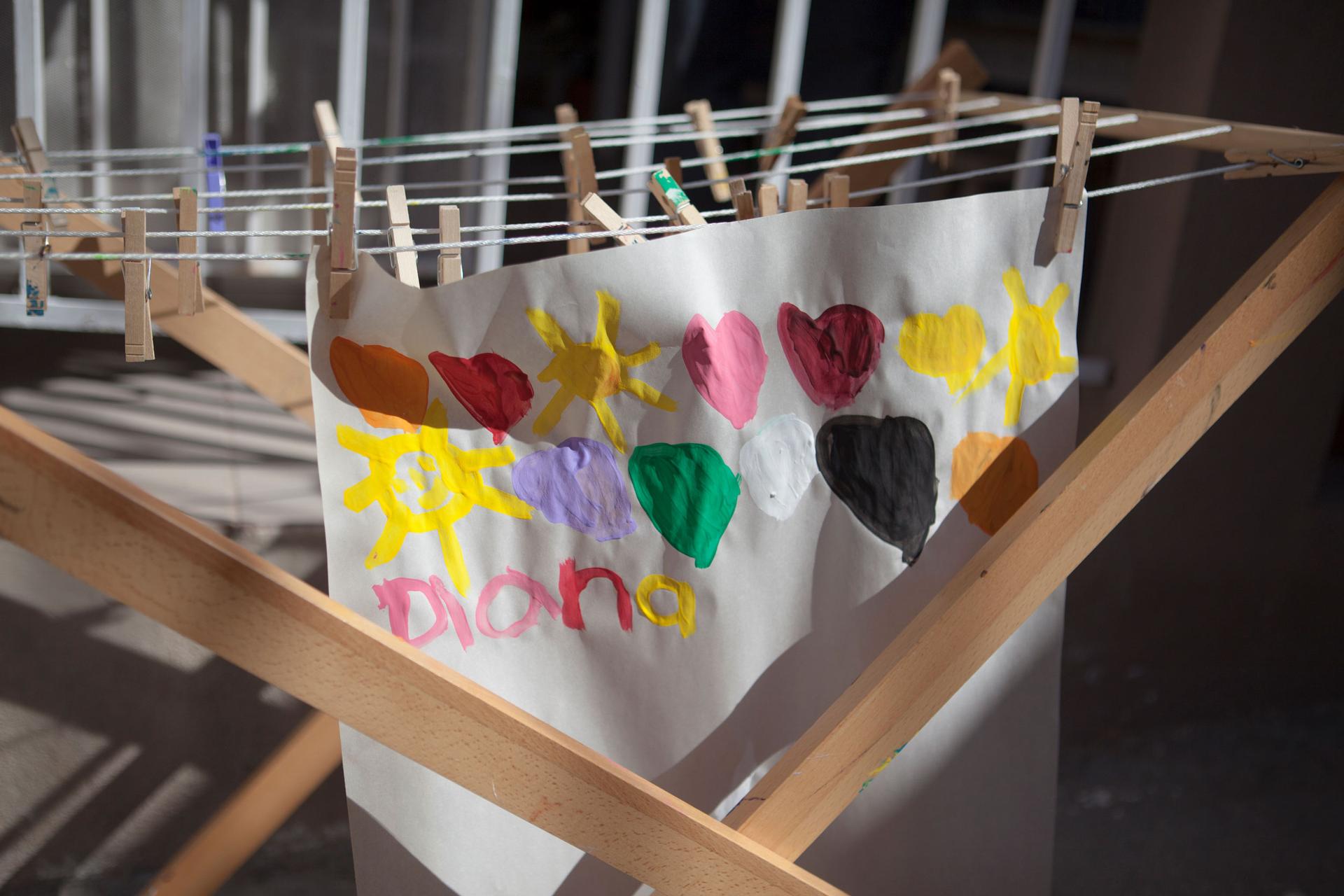
The Nest also seeks to offer the children a refuge from the crowded shelter, where many of their fellow residents are fleeing life-threatening violence. A few ways they do that: forbidding adults from talking about adult problems and banning cellphones. The adults who volunteer focus on being with the kids.
“We protect the sacredness of this place,” Ivey said. “This is about children.”
This story was originally posted by our partners at KQED.
